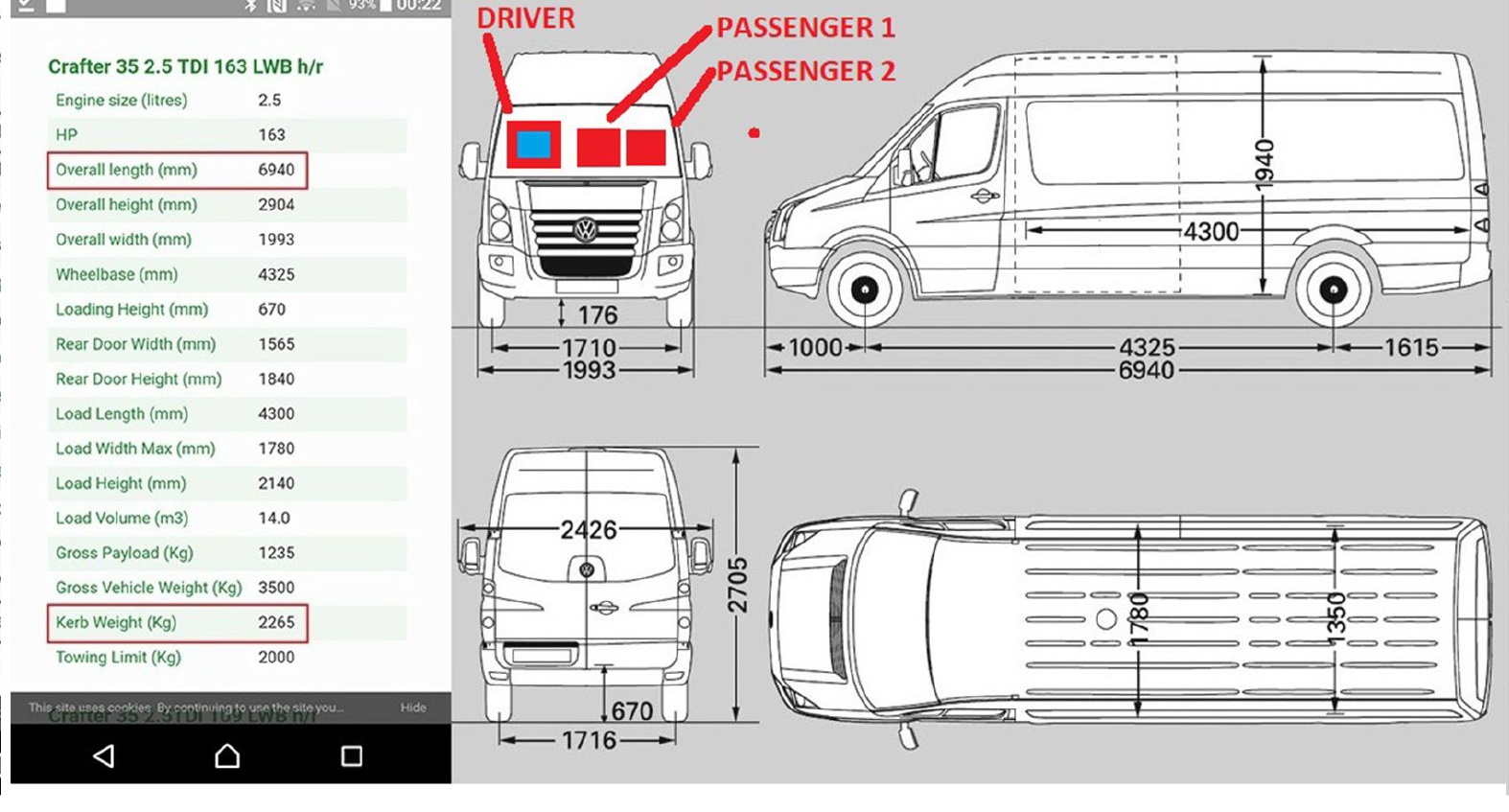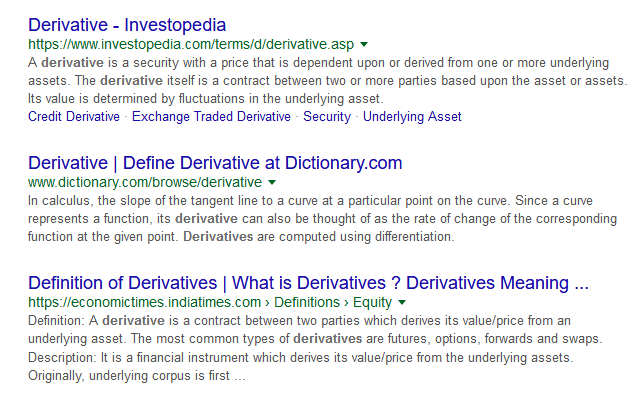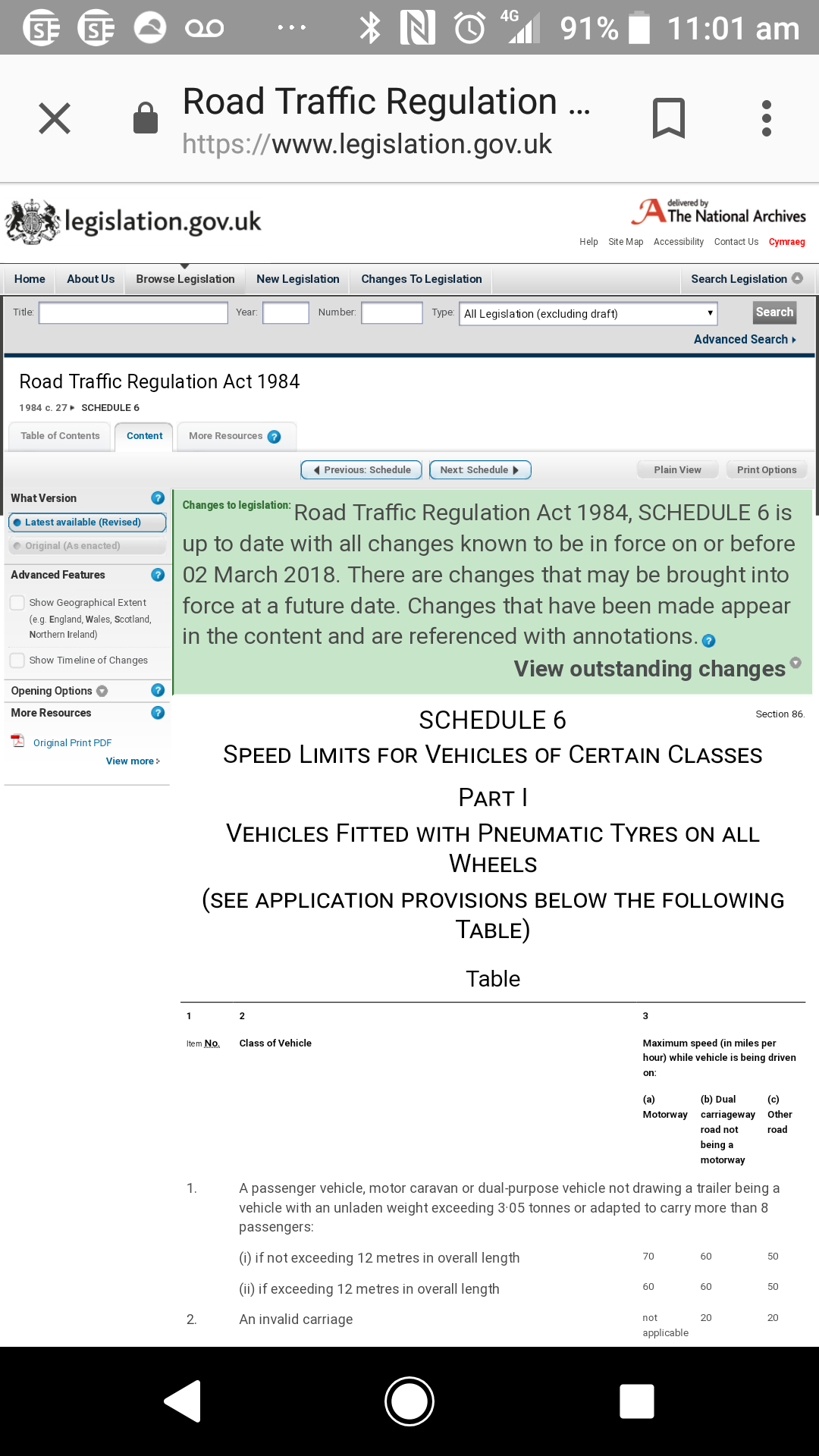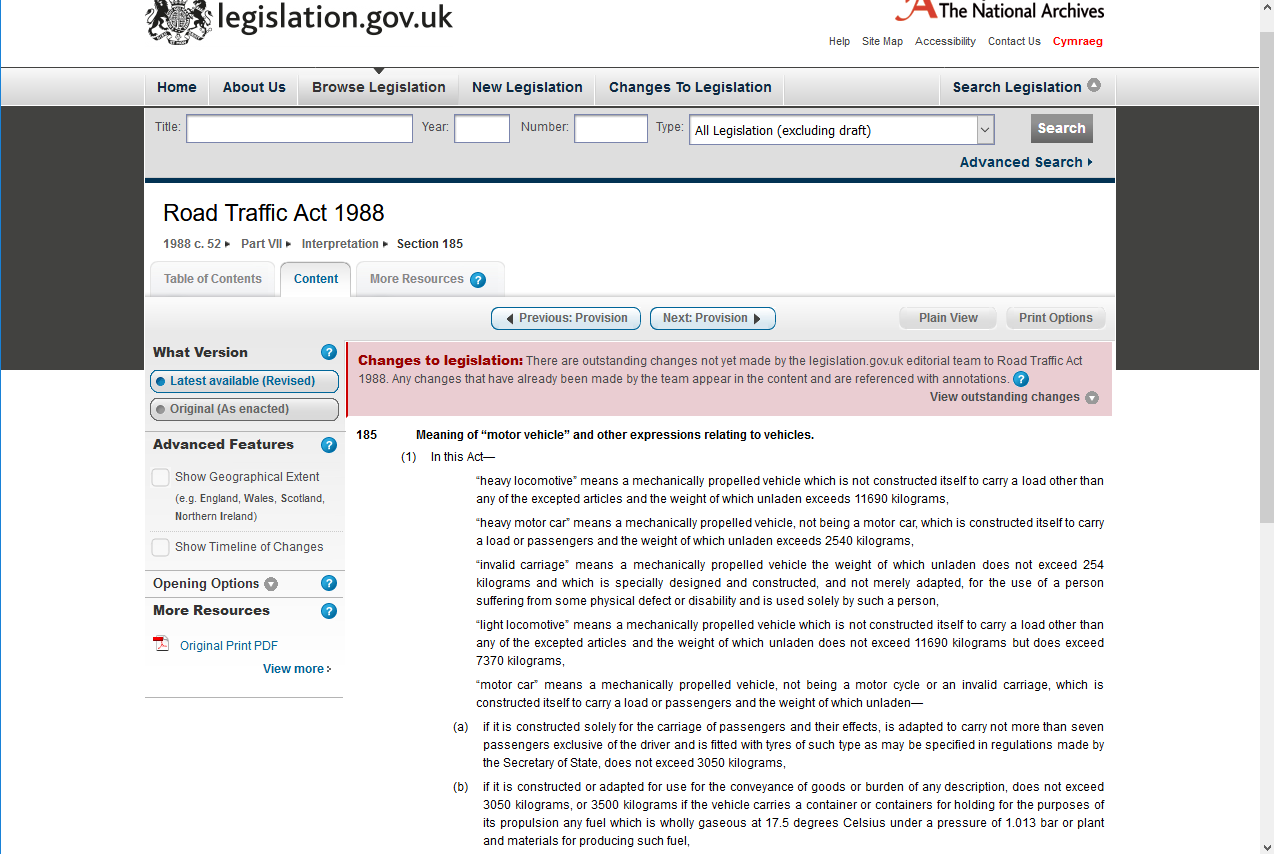Post by Administrator on Feb 4, 2018 12:20:08 GMT
to HM Government petitions...
Legal definition of a car derived van. Schedule 6 of the Road Traffic Regulation Act 1984 describes a car derived van as: 'car-derived van' means a goods vehicle which is constructed or adapted as a derivative of a passenger vehicle and which has a maximum laden weight not exceeding 2 tonnes.'
So we are talking about a vehicle that WAS a van, but is NOW a passenger carrier, that weighs under 2 tonnes.
Like an 8 seater mini bus.
We are not talking about commercial vans or cars or anything in between.
As they are "Light Goods vehicles" which weigh under 3.5 tonnes.
Many of which are also still "Motor cars" and not "Heavy Motor cars" or "HGV (Heavy Goods vehicles)
Although we have "Multi-purpose vehicles" ... yet that term is somewhat abstract as a "Motor car" can be used for multiple purposes in the legislation to carry goods or load of any description, or passengers, and their effects.
Also many vehicles are insured for multi-purpose use both buisness and domestic pleasure use. From motor-cycles to cars and vans and even HGV that people have as a personal car, or a camper van home.
The "Motor Car" meaning clearly includes the majority of "Light goods vehicles" and they are absolutely not 7.5tonne goods vehicles which are "Heavy motor cars" (HGV) - Heavy goods vehicles.
Here is where it makes all the clarity if you look correctly..
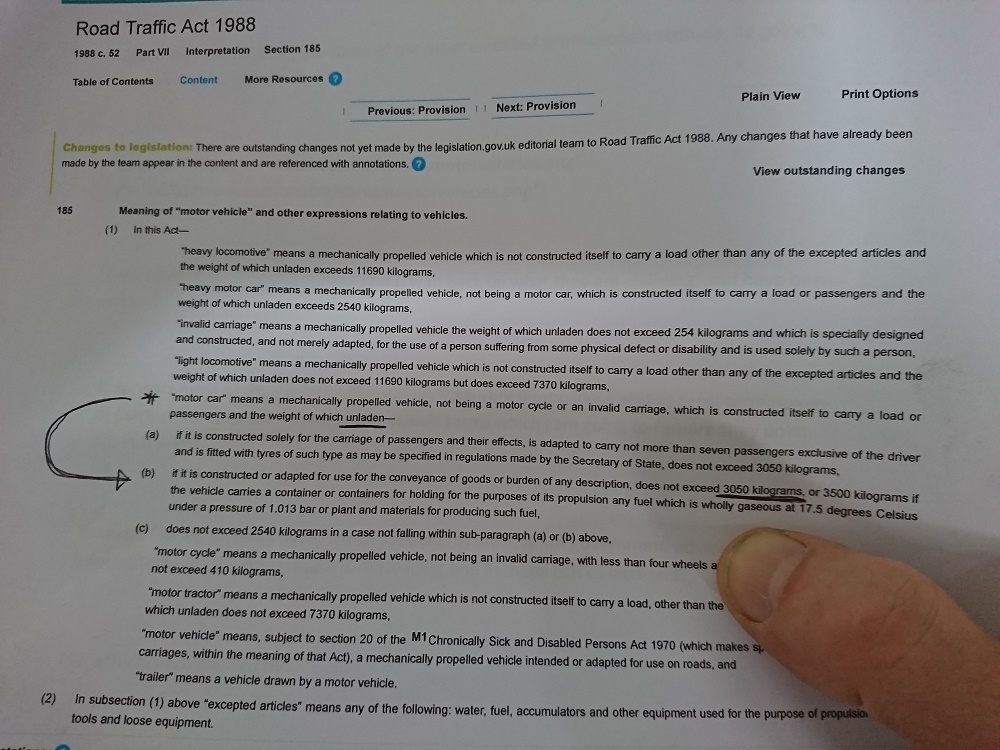
What they are doing is saying that.... the weight used for cars & light vehicles and even vans which carry goods, will be its KERB WEIGHT.
Not its GROSS weight, as with HGV and Lorrys, and heavy vehicles.
With the understanding that ALL motor vehicles which have a listed KERB weight.... will all have a MAX PAYLOAD which is unique but plated and that it is likely to not be too large, (most likely about 3.5tonnes) unless it is "overweight" which is an offence and will result in a fine.
I would suspect that the police do not like this as they would have to go around counting seats and weighing vehicles.. and its not practicle to do that with speed guns and cameras..
Tough.
Unfortunately the Government appear to be lying about the speed limits for vans on their advice pages...
Legal definition of a car derived van. Schedule 6 of the Road Traffic Regulation Act 1984 describes a car derived van as: 'car-derived van' means a goods vehicle which is constructed or adapted as a derivative of a passenger vehicle and which has a maximum laden weight not exceeding 2 tonnes.'
So we are talking about a vehicle that WAS a van, but is NOW a passenger carrier, that weighs under 2 tonnes.
Like an 8 seater mini bus.
We are not talking about commercial vans or cars or anything in between.
As they are "Light Goods vehicles" which weigh under 3.5 tonnes.
Many of which are also still "Motor cars" and not "Heavy Motor cars" or "HGV (Heavy Goods vehicles)
Although we have "Multi-purpose vehicles" ... yet that term is somewhat abstract as a "Motor car" can be used for multiple purposes in the legislation to carry goods or load of any description, or passengers, and their effects.
Also many vehicles are insured for multi-purpose use both buisness and domestic pleasure use. From motor-cycles to cars and vans and even HGV that people have as a personal car, or a camper van home.
The "Motor Car" meaning clearly includes the majority of "Light goods vehicles" and they are absolutely not 7.5tonne goods vehicles which are "Heavy motor cars" (HGV) - Heavy goods vehicles.
Speed limits on Dual carriageways are different for various classes of vehicles.
Your page here www.gov.uk/government/publications/car-derived-vans-and-dual-purpose-vehicles/car-derived-vans-and-dual-purpose-vehicles
adds confusion to the matter by drawing attention to a weight of 2 tonnes for dual-purpose vans that are car-derived. Yet the actual schedule 6 itself (which you links to) uses only the unladen weight of a motor vehicle to apply any speed restriction. Also The Road Traffic act 1988 section 185 clearly defines a CAR is a vehicle which is designed to carry a load, or passengers and does not exceed 3.05 tonnes unladen weight. This is what the schedule 6 is based on. In addition to this, the amendment of the motor vehicles (wearing of seatbelts) regulations 1993 -10- (2) has been inserted that "light goods vehicle" means a motor vehicle which (c) has a maximum laden weight not exceeding 3.5 tonnes.
You do in the schedule, note the "meaning" of dual purpose and car-derived vans, but this is pointless and not applicable to an actual VAN by the schedule tables specifications and given criteria. You also lie on your government advice page, which confuses the authorities and Highways departments and police forces.
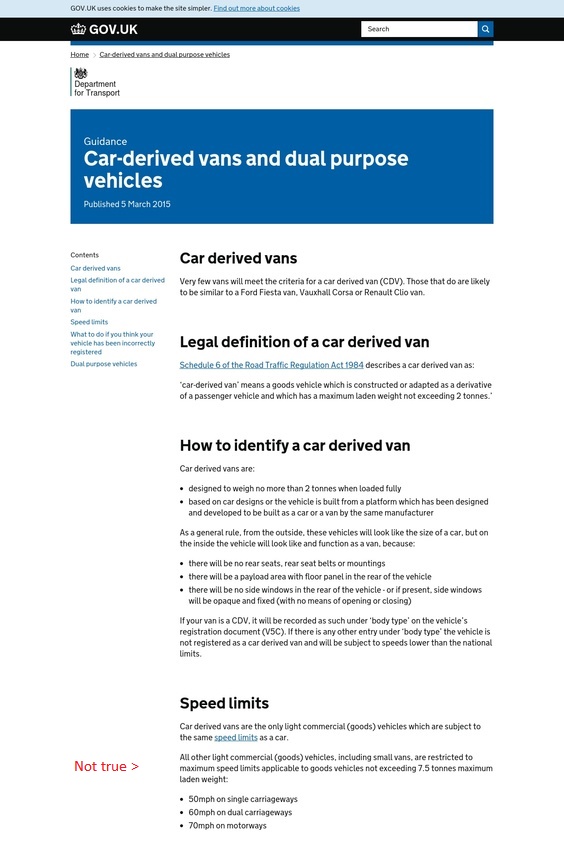
Schedule 6 speed restrictions are not applied to motor vehicles which are beneath the unladen weight range and lengths.
The only mention in the schedule 6 restrictions of goods vehicles and dual-purpose van's is to clearly omit those from being included with lorry's, HGV and heavier "goods vehicles".
so
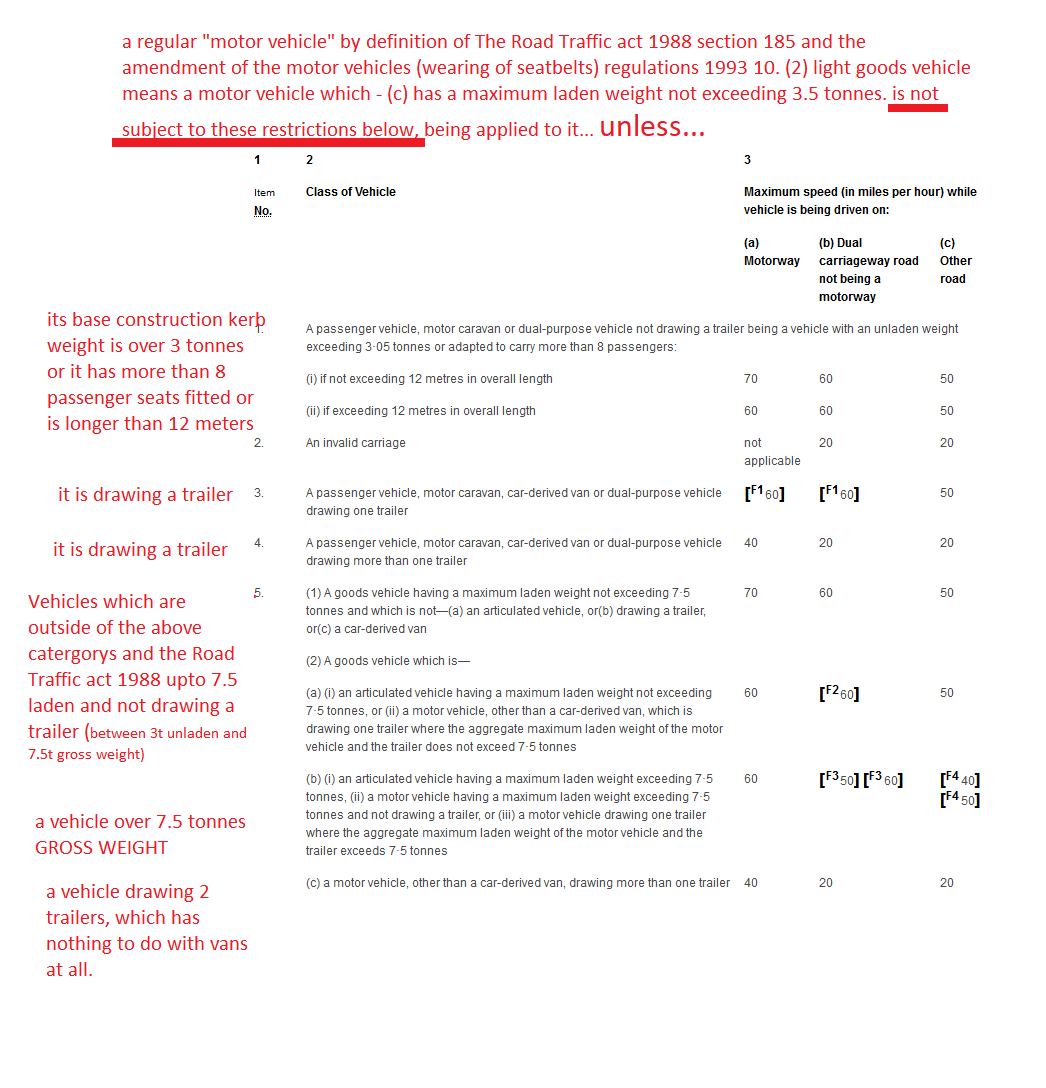
a regular van, which only has an unladen weight of 2.265kg and is under 12 meters in length, is designed to carry a load. And passengers, and is insured for multi-purpose use is simply a "Motor vehicle" which is in all specifications and sizes the same catergory of vehicle as a car. And the actual speed restriction chart in schedule 6 - speed limits for vehicles of certain classes - does not use the laden weight or gross weight when applying the restrictions to vehicles.
It only omits "dual -purpose vans" from having the 7.5 tonne maximum gross weight category "applied" to them in the schedule, which it is the only place they are mentioned.
And as they are already by merit not included in schedule 6 by specification, unless drawing a trailer... then clearly no speed limit restriction is applied to a van which has an unladen weight of only 2265kg
Yet there are certain Road traffic authorities who still argue this and add confusion to the clarity of the matter.
Thus i require HM Government to officially confirm that the van i drive is subject to the very same speed limits as a car.
Your page here www.gov.uk/government/publications/car-derived-vans-and-dual-purpose-vehicles/car-derived-vans-and-dual-purpose-vehicles
adds confusion to the matter by drawing attention to a weight of 2 tonnes for dual-purpose vans that are car-derived. Yet the actual schedule 6 itself (which you links to) uses only the unladen weight of a motor vehicle to apply any speed restriction. Also The Road Traffic act 1988 section 185 clearly defines a CAR is a vehicle which is designed to carry a load, or passengers and does not exceed 3.05 tonnes unladen weight. This is what the schedule 6 is based on. In addition to this, the amendment of the motor vehicles (wearing of seatbelts) regulations 1993 -10- (2) has been inserted that "light goods vehicle" means a motor vehicle which (c) has a maximum laden weight not exceeding 3.5 tonnes.
You do in the schedule, note the "meaning" of dual purpose and car-derived vans, but this is pointless and not applicable to an actual VAN by the schedule tables specifications and given criteria. You also lie on your government advice page, which confuses the authorities and Highways departments and police forces.

Schedule 6 speed restrictions are not applied to motor vehicles which are beneath the unladen weight range and lengths.
The only mention in the schedule 6 restrictions of goods vehicles and dual-purpose van's is to clearly omit those from being included with lorry's, HGV and heavier "goods vehicles".
so

a regular van, which only has an unladen weight of 2.265kg and is under 12 meters in length, is designed to carry a load. And passengers, and is insured for multi-purpose use is simply a "Motor vehicle" which is in all specifications and sizes the same catergory of vehicle as a car. And the actual speed restriction chart in schedule 6 - speed limits for vehicles of certain classes - does not use the laden weight or gross weight when applying the restrictions to vehicles.
It only omits "dual -purpose vans" from having the 7.5 tonne maximum gross weight category "applied" to them in the schedule, which it is the only place they are mentioned.
And as they are already by merit not included in schedule 6 by specification, unless drawing a trailer... then clearly no speed limit restriction is applied to a van which has an unladen weight of only 2265kg
Yet there are certain Road traffic authorities who still argue this and add confusion to the clarity of the matter.
Thus i require HM Government to officially confirm that the van i drive is subject to the very same speed limits as a car.
Here is where it makes all the clarity if you look correctly..

What they are doing is saying that.... the weight used for cars & light vehicles and even vans which carry goods, will be its KERB WEIGHT.
Not its GROSS weight, as with HGV and Lorrys, and heavy vehicles.
With the understanding that ALL motor vehicles which have a listed KERB weight.... will all have a MAX PAYLOAD which is unique but plated and that it is likely to not be too large, (most likely about 3.5tonnes) unless it is "overweight" which is an offence and will result in a fine.
I would suspect that the police do not like this as they would have to go around counting seats and weighing vehicles.. and its not practicle to do that with speed guns and cameras..
Tough.
Unfortunately the Government appear to be lying about the speed limits for vans on their advice pages...


